1762
10 interesting facts about the nature of India
Wildlife is one of the essential foundations of Hindu religion of India, as believed to have so many of their deities return to earth on four legs. But the animals are an integral part of Indian culture, even more than for religious reasons. Here are 10 intriguing facts from deadly to animals disgusting drunken Indian.
10. The syndrome of pregnancy puppies.

Dog bites are a problem all over the world, but in the Western world, most fanged vaccinated against rabies, so the bite - it's just a painful nuisance. In India, the consequences could be much worse. The country boasts the largest number of stray dogs than any other country in the world - tens of millions of dogs attacking people as you like. It is estimated that about 20,000 people die of rabies in India every year.
In the more remote rural areas, a strange phenomenon where the bitten people believe that bites appear puppies and grow in their stomachs. The syndrome of pregnancy puppies - this is an alarming form of mass hysteria, which mainly applies to areas with low levels of education. Victims complain that they can feel within yourself wiggling puppies and often behave strangely, for example, bark. Rather than seek medical help, these people often seek help from traditional healers - who makes the appointment for the oral treatment for dissolving the puppies, which are then "ok go through the digestive tract.»
9. Monkey problem.
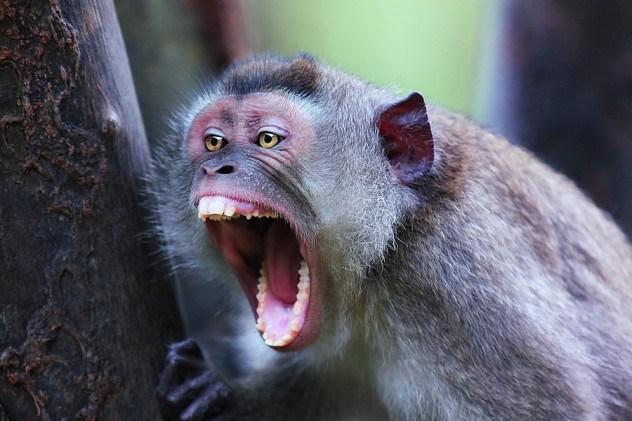
Like many other beings, India considers its sacred monkeys. And because the Indians are too lenient to the thousands and thousands of rhesus monkeys who filled the streets of the city. It is the extremely dangerous: they are prone to destruction of houses and bite passers-by. Hordes of monkeys literally grimace people, taking food and clothes ripping. Cities such as New Delhi, where the plague is particularly terrible, introduced a policy of catching monkeys. But in many cases, the animals are too smart to fall for the trap.
In 2007 Savinder Singh Bahia was to throw from his balcony and died trying to repel a gang of monkeys that attacked him. Although people are exposed daily to attacks, they still continue to feed animals. The problem has no end or edge; Hindu law dictates that apes can not be killed, but residents complain that exported to the holy places of the monkeys back to the city.
8. pig toilet

Pigs are undoubtedly the most intelligent animals, at least as smart as dogs. Despite his cunning, pigs often to escape from extreme hunger will devour anything that seems even remotely edible - from waste residues to their relatives and even human feces.
Goa is the pig toilet rural toilet, over the pit, which takes place in a pigsty. Pigs gratefully accept anything that gets in their trough. So that is not hygienic - offset by productivity. Modern plumbing slowly displaces pork toilets, but today, they still exist and are used in India
7. The crisis of Indian vultures
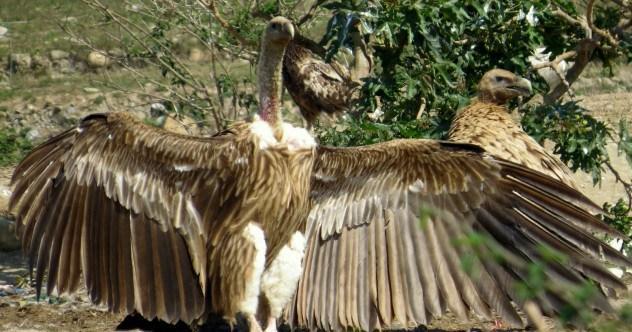
Evolution appointed vultures have major scavengers. Huge wingspan allows them to hover in the air for several hours. Their beaks, though horrific, but the bird's standards are quite weak and are designed for digging and devouring the flesh. However, no matter how unattractive they may seem, vultures play an important role in the ecological cycle: in the processing of the carcasses.
Only 20 years ago, India was filled with flocks of vultures - are so huge that they could close all the sky. But by 1999, their number has decreased dramatically due to the mysterious kidney disease. By 2008, 99, 9% of vultures in India disappeared. As a result, it was found that they were killed drug called diclofenac (analgesic, such as aspirin or ibuprofen). Hindus revere cows, and when cows show signs of pain, they are anesthetized with diclofenac. After the death of the animal, vultures ate their corpses. And though perhaps vultures and boast the most effective digestive system in the world, they can not cope with drugs.
India has banned the use of diclofenac for veterinary use in 2006, but it is still widely used. The disappearance of vultures has caused a great surge of disease in the country, as rats and feral dogs have taken the place of vultures, and along with steel distributors pathogens, which they are not able to destroy in their intestines as it does in birds scavengers.
6. Tigers
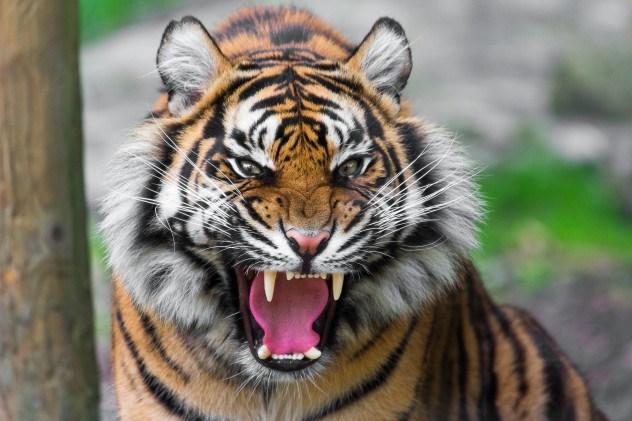
Tigers once roamed across India tens of thousands. There is always a danger, before the people to know that you can not stray too far from the lights at night so as not to become a dish on the first tigers. But people involved in the fact that most of the Tigers were "cannibals" Killing the tiger is a serious matter; if the bullet did not hit in a vital organ, it is unlikely that the tiger will die. Instead, the wounded beast, exhausted by his injury will be forced to hunt unprotected prey. A tiger in the Indus, a prey is usually unsuspecting people.
Tigress Champavat in the list of the most dangerous in the history of the Tigers "famous" with more than 400 murders. In 1907, the legendary hunter Jim Corbett put an end to her terror. Ironically, when the tigress was shot in the mouth and show people, its tusks were destroyed, and she could not even eat properly.
To date, little tigers left in the wild - only 3,200 individuals according to the World Wildlife Fund. They are still "need" to feed dozens of lives each year, especially in the Sundarbans mangrove forests, which roams around 500 Bengal tigers. It is assumed that the brackish water makes the Tigers irritability and aggressiveness unnatural. Fishermen who go fishing in those places, sometimes wearing face masks on the backs of their heads, because the tigers normally attack their prey from behind.
5. Drunken elephants
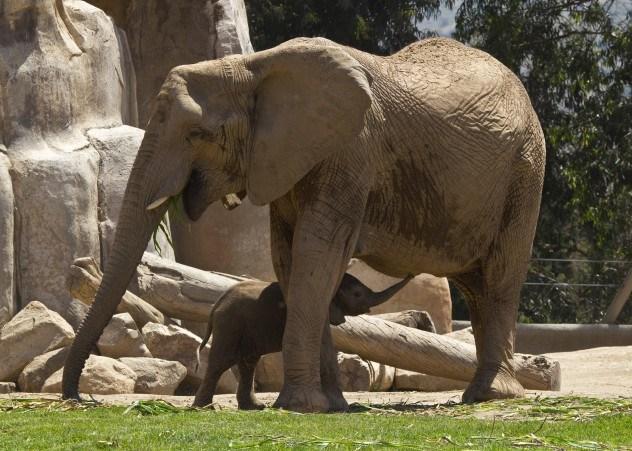
We can not fail to fall under the charm of the elephants; They are so similar to us - to empathize and smart. The most talented representatives are known for their ability to paint self-portraits, and even imitate human speech. And just as we are, elephants are sometimes in need of strong drink. In 2012, a herd of 50 elephants were lured out of the jungle smell Mach, good homemade liquor. Suck about 500 liters of alcohol, they proceeded to the destruction of dozens of houses in the village Dumurkota. Three hours later, they were finally expelled from the city, but the damage was already done.
It was not the first time that violence of drunken elephants. The problem has become so widespread that in some areas were erected fences hung with chili. Pepper, sometimes called "ghost chili" is one of the most burning hot in the world, and its severity is sufficient to deploy ago, even the most resolute pachyderms.
4. Soma Guncha (goonch)
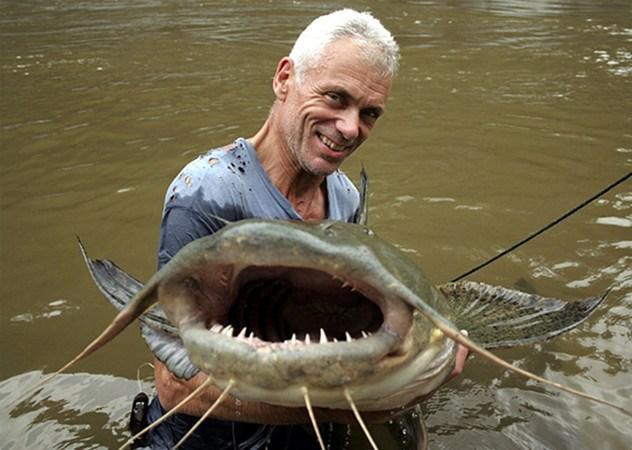
Catfish can be ugly, but they are unlikely to evoke thoughts of danger. However, in the Indian River Kali Guncha - giant devil catfish, believed to be implicated in several human deaths. Indian funeral rites dictate that the body should be turned to ashes and then scattered over the river, but it is often eaten Guncha charred remains. With preference for human flesh, these catfish, which can reach a weight of more than 65 kg (150 lb), have been implicated in the disappearance of swimmers. Despite the fact that not enough Guncha formidable nature shark catfish the size of a representative of the person may seize someone's ankle, to drag under the water and drown.
3. Indian lions
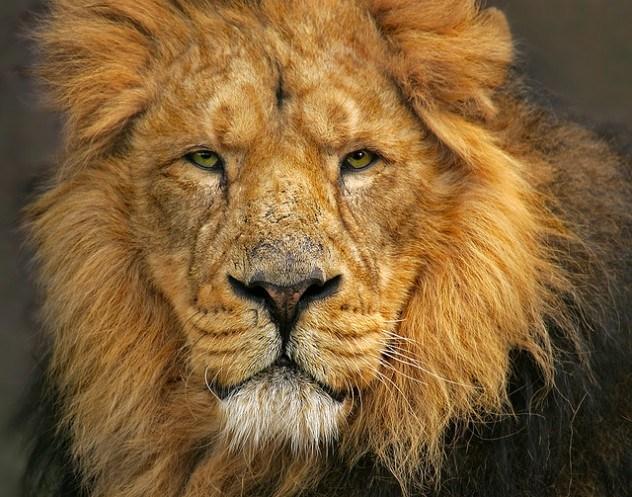
India belongs to the tigers; but in the National Park and Wildlife Sanctuary Gir Forest National Park, home to another large cat: a rare Asiatic lion. Lions once roamed over a wide band of its habitats from Africa through the Middle East, India, Greece and Hungary. Today, their population has decreased significantly. The number of Indian lions lions is only about 400 individuals, and are separated from their African relatives, tens of thousands of years of evolution. They are slightly smaller than African lions and have a small mane. Unfortunately, these creatures so little that they are each other's relatives, from the same flock. A forest fire or disease outbreak can destroy whole species. A handful of lions currently transported to the neighboring state, to ensure the survival of the species.
2. Temple rats

A single rat running across the kitchen at night to a lot of people povyskakivali furniture. But in the temple of Karni Mata rat revered as a living manifestation of the Hindu deities. As the story goes, Karni Mata was an Indian sage - the embodiment of the goddess Durga imni. When one of stepchildren Mata drowned, she begged Yama, the god of death, to return it. But Yama raised all the sons of Karni Mata in the form of rats.
Built by Maharaja Sir Ganga Singh, ornate marble temple is home to 15,000 black rats fed donated milk and sweets. Against the background of the black hordes of the temple there is a small flock of white rats, which are believed to be the reincarnation of Karni Mata and her sons, and their presence is considered to be particularly successful. The temple is open to the public, but be careful -krysy are not afraid of people. And you can not wear shoes in the temple.
1. Mongoose and Cobra
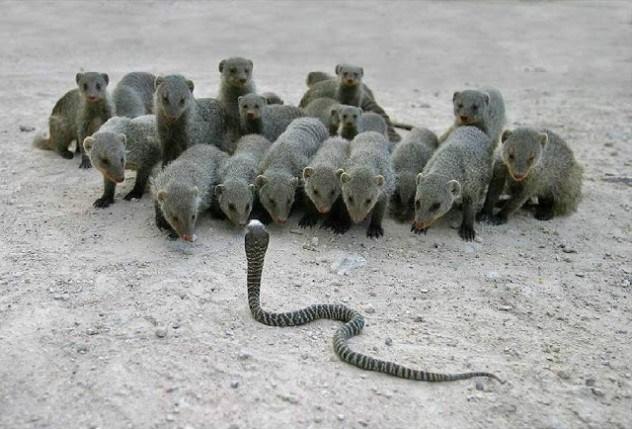
King Cobra is probably the worst snake in the world. And not without reason: the adult can climb high enough to look a person in the eye. His horrifying guttural hissing sound is often compared to growl angry dog. Full supply of venom of the king cobra is enough to kill 20 people. But even this nightmare of nature has enemies.
Enter mongoose: nice guy the size of a ferret. But the mongoose is a clever predator. Adorable little mongoose is a fast, flexible and able to ruthlessly kill cobras and other snakes. They are bitten by a snake they develop some immunity to the poison snakes, but often they are able to catch a snake and without hitting the latter. A common way to his hunting - a dance from side to side, leap from the impact of a cobra, and the capture of her from behind his head.
10. The syndrome of pregnancy puppies.

Dog bites are a problem all over the world, but in the Western world, most fanged vaccinated against rabies, so the bite - it's just a painful nuisance. In India, the consequences could be much worse. The country boasts the largest number of stray dogs than any other country in the world - tens of millions of dogs attacking people as you like. It is estimated that about 20,000 people die of rabies in India every year.
In the more remote rural areas, a strange phenomenon where the bitten people believe that bites appear puppies and grow in their stomachs. The syndrome of pregnancy puppies - this is an alarming form of mass hysteria, which mainly applies to areas with low levels of education. Victims complain that they can feel within yourself wiggling puppies and often behave strangely, for example, bark. Rather than seek medical help, these people often seek help from traditional healers - who makes the appointment for the oral treatment for dissolving the puppies, which are then "ok go through the digestive tract.»
9. Monkey problem.

Like many other beings, India considers its sacred monkeys. And because the Indians are too lenient to the thousands and thousands of rhesus monkeys who filled the streets of the city. It is the extremely dangerous: they are prone to destruction of houses and bite passers-by. Hordes of monkeys literally grimace people, taking food and clothes ripping. Cities such as New Delhi, where the plague is particularly terrible, introduced a policy of catching monkeys. But in many cases, the animals are too smart to fall for the trap.
In 2007 Savinder Singh Bahia was to throw from his balcony and died trying to repel a gang of monkeys that attacked him. Although people are exposed daily to attacks, they still continue to feed animals. The problem has no end or edge; Hindu law dictates that apes can not be killed, but residents complain that exported to the holy places of the monkeys back to the city.
8. pig toilet

Pigs are undoubtedly the most intelligent animals, at least as smart as dogs. Despite his cunning, pigs often to escape from extreme hunger will devour anything that seems even remotely edible - from waste residues to their relatives and even human feces.
Goa is the pig toilet rural toilet, over the pit, which takes place in a pigsty. Pigs gratefully accept anything that gets in their trough. So that is not hygienic - offset by productivity. Modern plumbing slowly displaces pork toilets, but today, they still exist and are used in India
7. The crisis of Indian vultures

Evolution appointed vultures have major scavengers. Huge wingspan allows them to hover in the air for several hours. Their beaks, though horrific, but the bird's standards are quite weak and are designed for digging and devouring the flesh. However, no matter how unattractive they may seem, vultures play an important role in the ecological cycle: in the processing of the carcasses.
Only 20 years ago, India was filled with flocks of vultures - are so huge that they could close all the sky. But by 1999, their number has decreased dramatically due to the mysterious kidney disease. By 2008, 99, 9% of vultures in India disappeared. As a result, it was found that they were killed drug called diclofenac (analgesic, such as aspirin or ibuprofen). Hindus revere cows, and when cows show signs of pain, they are anesthetized with diclofenac. After the death of the animal, vultures ate their corpses. And though perhaps vultures and boast the most effective digestive system in the world, they can not cope with drugs.
India has banned the use of diclofenac for veterinary use in 2006, but it is still widely used. The disappearance of vultures has caused a great surge of disease in the country, as rats and feral dogs have taken the place of vultures, and along with steel distributors pathogens, which they are not able to destroy in their intestines as it does in birds scavengers.
6. Tigers

Tigers once roamed across India tens of thousands. There is always a danger, before the people to know that you can not stray too far from the lights at night so as not to become a dish on the first tigers. But people involved in the fact that most of the Tigers were "cannibals" Killing the tiger is a serious matter; if the bullet did not hit in a vital organ, it is unlikely that the tiger will die. Instead, the wounded beast, exhausted by his injury will be forced to hunt unprotected prey. A tiger in the Indus, a prey is usually unsuspecting people.
Tigress Champavat in the list of the most dangerous in the history of the Tigers "famous" with more than 400 murders. In 1907, the legendary hunter Jim Corbett put an end to her terror. Ironically, when the tigress was shot in the mouth and show people, its tusks were destroyed, and she could not even eat properly.
To date, little tigers left in the wild - only 3,200 individuals according to the World Wildlife Fund. They are still "need" to feed dozens of lives each year, especially in the Sundarbans mangrove forests, which roams around 500 Bengal tigers. It is assumed that the brackish water makes the Tigers irritability and aggressiveness unnatural. Fishermen who go fishing in those places, sometimes wearing face masks on the backs of their heads, because the tigers normally attack their prey from behind.
5. Drunken elephants

We can not fail to fall under the charm of the elephants; They are so similar to us - to empathize and smart. The most talented representatives are known for their ability to paint self-portraits, and even imitate human speech. And just as we are, elephants are sometimes in need of strong drink. In 2012, a herd of 50 elephants were lured out of the jungle smell Mach, good homemade liquor. Suck about 500 liters of alcohol, they proceeded to the destruction of dozens of houses in the village Dumurkota. Three hours later, they were finally expelled from the city, but the damage was already done.
It was not the first time that violence of drunken elephants. The problem has become so widespread that in some areas were erected fences hung with chili. Pepper, sometimes called "ghost chili" is one of the most burning hot in the world, and its severity is sufficient to deploy ago, even the most resolute pachyderms.
4. Soma Guncha (goonch)

Catfish can be ugly, but they are unlikely to evoke thoughts of danger. However, in the Indian River Kali Guncha - giant devil catfish, believed to be implicated in several human deaths. Indian funeral rites dictate that the body should be turned to ashes and then scattered over the river, but it is often eaten Guncha charred remains. With preference for human flesh, these catfish, which can reach a weight of more than 65 kg (150 lb), have been implicated in the disappearance of swimmers. Despite the fact that not enough Guncha formidable nature shark catfish the size of a representative of the person may seize someone's ankle, to drag under the water and drown.
3. Indian lions

India belongs to the tigers; but in the National Park and Wildlife Sanctuary Gir Forest National Park, home to another large cat: a rare Asiatic lion. Lions once roamed over a wide band of its habitats from Africa through the Middle East, India, Greece and Hungary. Today, their population has decreased significantly. The number of Indian lions lions is only about 400 individuals, and are separated from their African relatives, tens of thousands of years of evolution. They are slightly smaller than African lions and have a small mane. Unfortunately, these creatures so little that they are each other's relatives, from the same flock. A forest fire or disease outbreak can destroy whole species. A handful of lions currently transported to the neighboring state, to ensure the survival of the species.
2. Temple rats

A single rat running across the kitchen at night to a lot of people povyskakivali furniture. But in the temple of Karni Mata rat revered as a living manifestation of the Hindu deities. As the story goes, Karni Mata was an Indian sage - the embodiment of the goddess Durga imni. When one of stepchildren Mata drowned, she begged Yama, the god of death, to return it. But Yama raised all the sons of Karni Mata in the form of rats.
Built by Maharaja Sir Ganga Singh, ornate marble temple is home to 15,000 black rats fed donated milk and sweets. Against the background of the black hordes of the temple there is a small flock of white rats, which are believed to be the reincarnation of Karni Mata and her sons, and their presence is considered to be particularly successful. The temple is open to the public, but be careful -krysy are not afraid of people. And you can not wear shoes in the temple.
1. Mongoose and Cobra

King Cobra is probably the worst snake in the world. And not without reason: the adult can climb high enough to look a person in the eye. His horrifying guttural hissing sound is often compared to growl angry dog. Full supply of venom of the king cobra is enough to kill 20 people. But even this nightmare of nature has enemies.
Enter mongoose: nice guy the size of a ferret. But the mongoose is a clever predator. Adorable little mongoose is a fast, flexible and able to ruthlessly kill cobras and other snakes. They are bitten by a snake they develop some immunity to the poison snakes, but often they are able to catch a snake and without hitting the latter. A common way to his hunting - a dance from side to side, leap from the impact of a cobra, and the capture of her from behind his head.























